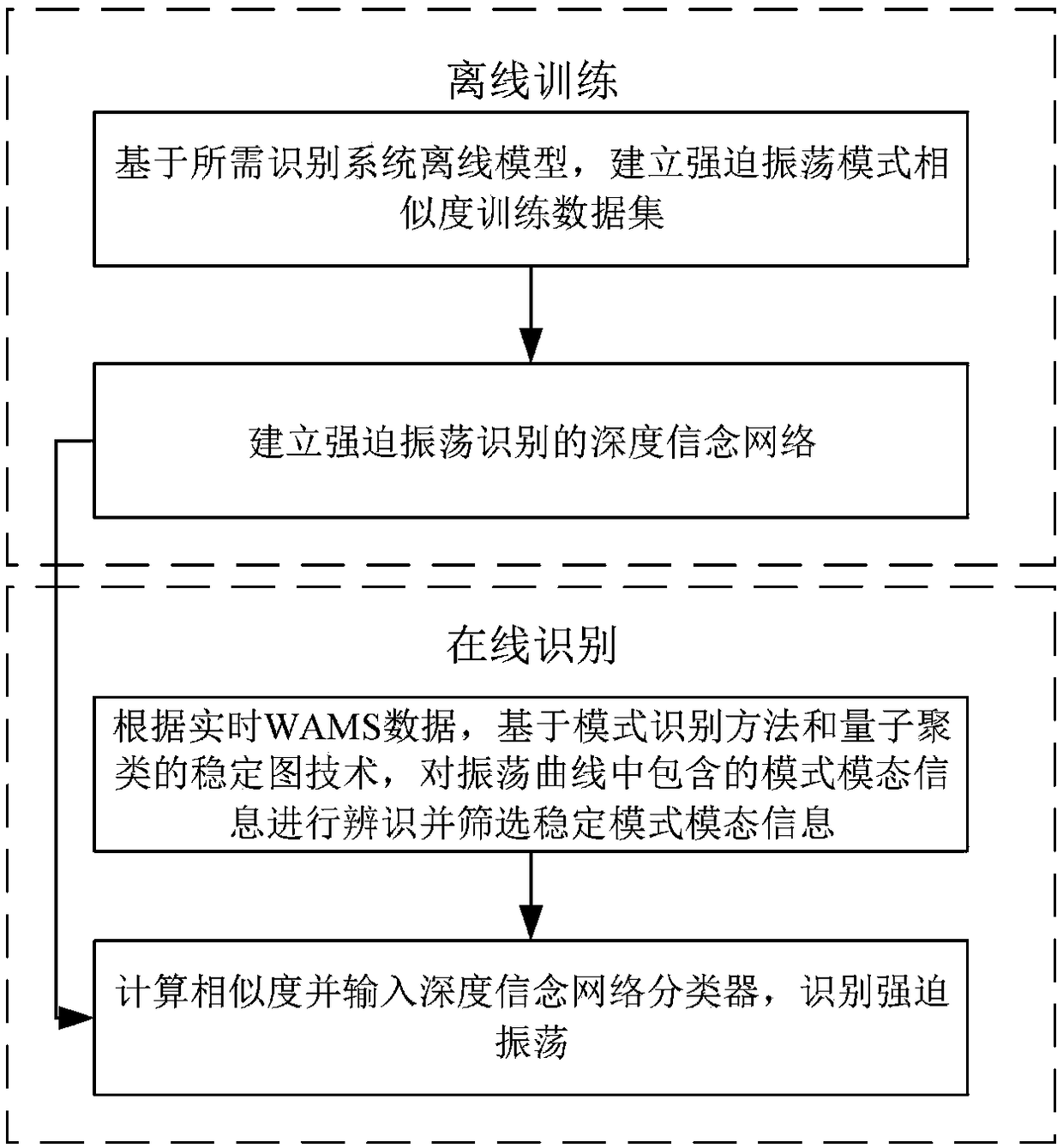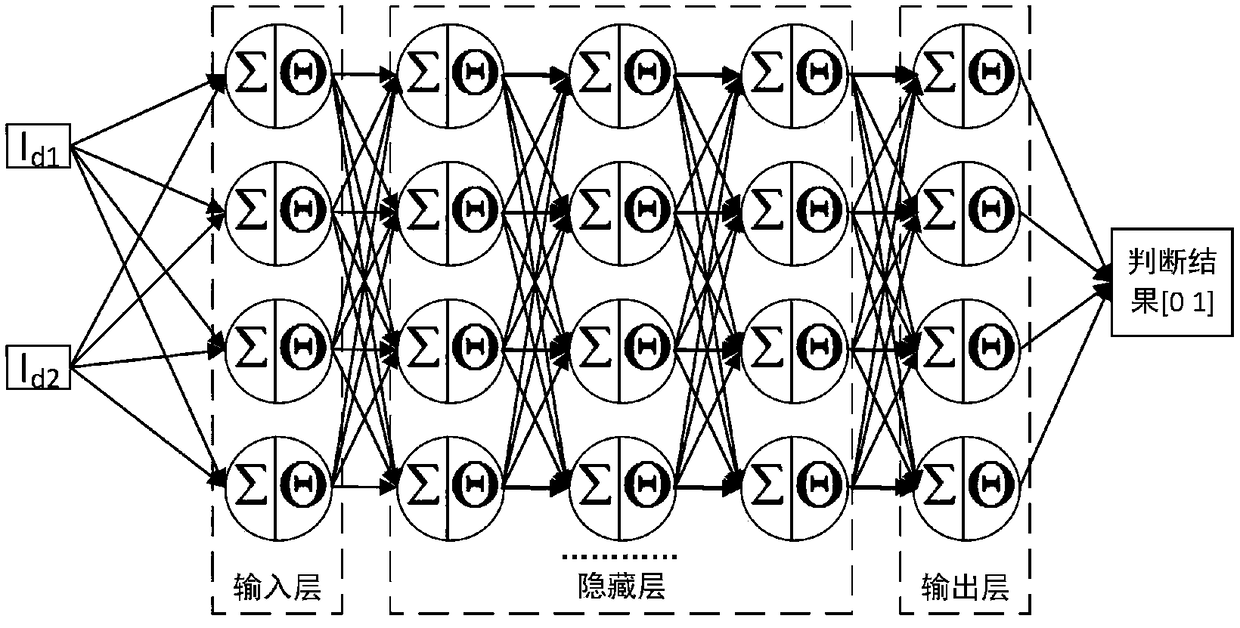A forced oscillation identification method based on pattern similarity
A technology of forced oscillation and identification method, which is applied in the field of power system, can solve problems such as prone to misjudgment, and achieve the effect of improving accuracy and clear determination process
- Summary
- Abstract
- Description
- Claims
- Application Information
AI Technical Summary
Problems solved by technology
Method used
Image
Examples
Embodiment Construction
[0031] The present invention will be further described in detail below in conjunction with the accompanying drawings and through specific embodiments. The following embodiments are only descriptive, not restrictive, and cannot limit the protection scope of the present invention.
[0032] The key of the present invention is to use the mode and modal information of the free oscillation component and the forced oscillation component in the forced oscillation to identify the forced oscillation. The mode and modal characteristics of the forced oscillation are as follows:
[0033] The power system is normalized, that is, the system to be analyzed is as follows:
[0034]
[0035] It is more convenient to solve the equation described by the formula using the mode superposition method. When solving it, the mode change matrix U is used, and the equation changes from the existing coordinate x to the principal coordinate z. Decoupling, the state equation in the new coordinates after tr...
PUM
 Login to View More
Login to View More Abstract
Description
Claims
Application Information
 Login to View More
Login to View More - Generate Ideas
- Intellectual Property
- Life Sciences
- Materials
- Tech Scout
- Unparalleled Data Quality
- Higher Quality Content
- 60% Fewer Hallucinations
Browse by: Latest US Patents, China's latest patents, Technical Efficacy Thesaurus, Application Domain, Technology Topic, Popular Technical Reports.
© 2025 PatSnap. All rights reserved.Legal|Privacy policy|Modern Slavery Act Transparency Statement|Sitemap|About US| Contact US: help@patsnap.com



